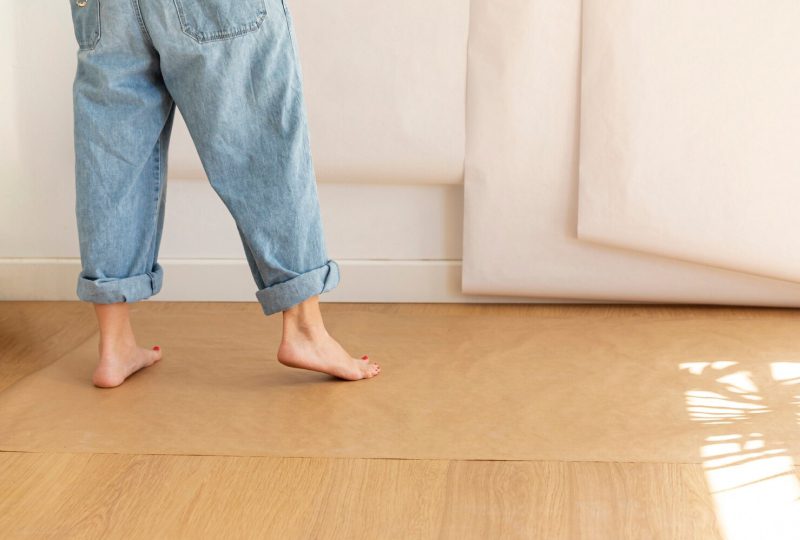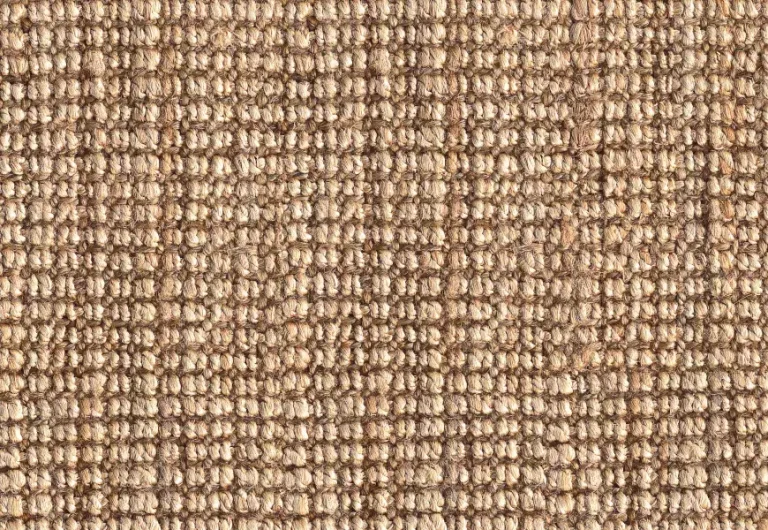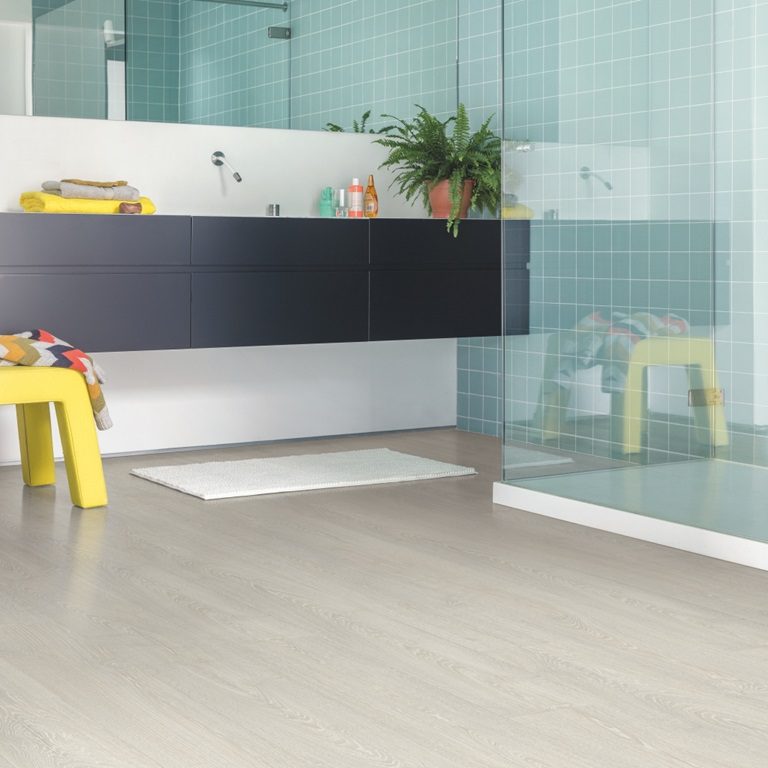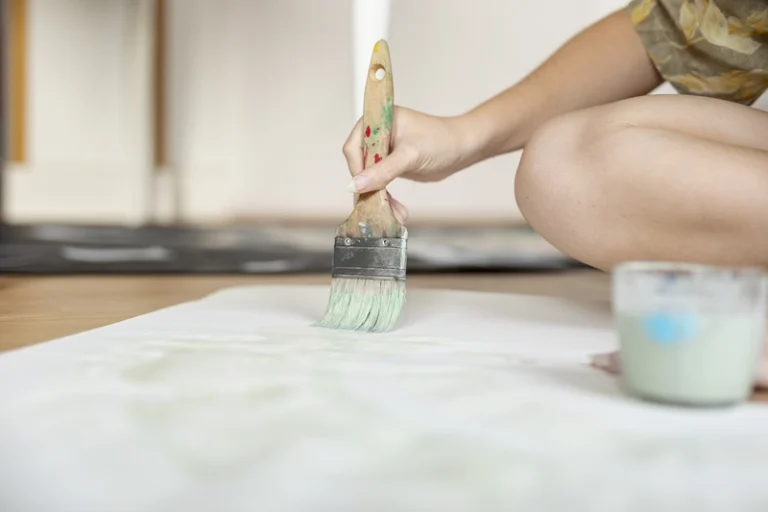Uneven floors can not only be unsightly, but they can also pose a range of risks and challenges when it comes to installing new flooring. In this comprehensive guide, we will explore the root causes of uneven floors and discuss how to determine the severity of the issue. We will also delve into the essential tools needed to measure uneven floors, as well as the potential risks of installing flooring on an uneven surface.
Subsequently, we will provide a detailed insight into the preparation of subfloors for uneven surfaces, including the necessary materials and step-by-step instructions for achieving a level base. We will scrutinize the best flooring options for uneven floors, examining the pros and cons of each option, from carpet tiles and vinyl flooring to laminate, engineered wood, cork, and rubber flooring.
We will guide you through the process of installing flooring on uneven floors, detailing the tools required and the essential steps to ensure a successful outcome. Whether you are dealing with minor undulations or significant floor irregularities, this article is designed to equip you with the knowledge and resources to tackle the challenge of uneven floors with confidence.
Uneven Floors Causes
Uneven floors can be caused by a variety of factors, including:
- Structural settling, which is a common cause of flooring problems, occurring as a building naturally shifts and adjusts over time.
- Moisture problems, such as water damage, leaking pipes, or excessive humidity, can lead to swelling and warping of wooden floors.
- Subfloor issues, like inadequate support or uneven joists, can result in a wobbly or sagging floor.
- Installation errors, such as using the wrong underlayment or not acclimating the flooring material properly, can also contribute to unevenness.
Understanding these underlying subfloor issues is crucial for effective floor repair and maintenance.
How to Determine the Severity of Uneven Floors?
Assessing the severity of uneven floors involves examining the extent of the irregularities, identifying potential high spots or low areas, and determining the overall scope of floor leveling required.
This process begins with a visual assessment to detect any noticeable dips, bulges, or sloping areas. It is important to inspect the subfloor for moisture damage, rot, or structural issues that may contribute to the unevenness. Utilizing precision tools such as laser levels and straightedges can aid in accurately measuring the deviations from the ideal level.
Understanding the severity of uneven floors is crucial in determining the most effective methods for remediation and achieving a stable, level surface.
Tools to Measure Uneven Floors
Measuring uneven floors requires the use of essential tools such as leveling instruments, straightedges, laser levels, or specialized floor inspection devices to accurately assess the floor’s irregularities.
Leveling instruments, including spirit levels and water levels, are crucial for determining the slope and angle variations in the floor. Straightedges help in identifying high and low spots, while laser levels ensure precise measurements across larger surfaces. Specialized floor inspection devices, such as moisture meters and floor flatness gauges, provide comprehensive data on the condition of the floor, enabling professionals to make informed decisions for necessary repairs or adjustments.
Understanding the functionality of each tool and following proper measurement guidelines is essential for obtaining accurate floor assessment results.
Risks of Installing Flooring on Uneven Floors
Installing flooring on uneven surfaces poses risks such as premature wear, structural damage, or compromised aesthetics, affecting the long-term performance and durability of the floor.
Uneven subfloors can lead to gaps or uneven pressure points, causing the flooring material to degrade faster and potentially resulting in an uneven surface. This not only affects the visual appeal but also compromises the structural integrity of the flooring installation.
An uneven subfloor can create challenges during the installation process, making it difficult to achieve a smooth and seamless finish. Addressing subfloor issues before installation is crucial to ensure the longevity and overall quality of the flooring.
How to Prepare Your Subfloor for Uneven Floors
Preparing the subfloor for uneven floors involves thorough assessment, addressing any structural issues, applying leveling compounds or underlayment, and ensuring proper moisture barriers to create a suitable base for flooring installation.
Assessment methods are crucial in identifying any irregularities, such as dips or high points, for targeted repair. Subfloor repair techniques may encompass addressing squeaks, securing loose panels, and replacing damaged sections.
When applying leveling compounds, proper mixing and spreading techniques are essential for achieving a smooth and even surface. Understanding the appropriate underlayment for different flooring types is fundamental in preventing future issues. It’s imperative to follow manufacturer guidelines and ensure the subfloor is level, dry, and structurally sound before proceeding with the flooring installation.
Materials Needed for Subfloor Preparation
Subfloor preparation requires essential materials such as leveling compounds, floor underlayment, moisture barriers, and specialized adhesives to address unevenness and create a stable base for flooring installation.
Leveling compounds play a crucial role in smoothing out any inconsistencies in the subfloor, ensuring a flat and even surface for the installation of the underlayment.
Floor underlayment, on the other hand, serves as a cushioning layer to minimize sound transmission and provide thermal insulation.
Moisture barriers are essential for protecting the flooring material from moisture seeping up through the subfloor, preventing warping or damage.
Specialized adhesives are used to securely bond the underlayment and flooring material to the prepared subfloor, ensuring long-lasting stability and performance.
Steps for Preparing a Subfloor
The process of preparing a subfloor for uneven floors involves steps such as:
- Subfloor inspection
- Repair of damaged areas
- Application of leveling compounds
- Installation of moisture barriers
- Addressing specific subfloor irregularities to achieve a level surface for flooring
After conducting a thorough subfloor inspection to identify any structural weaknesses or inconsistencies, the next step is to carefully repair any damaged areas by replacing rotted or weakened sections, securing loose subflooring, and addressing any protruding nails or screws.
Once the repairs are complete, the application of leveling compounds becomes crucial to ensure a smooth, even surface. This involves mixing and spreading the compound to fill in low spots and level out any high areas, creating a solid foundation for the new flooring.
The installation of moisture barriers can help prevent issues such as mold and mildew from developing under the flooring, providing long-term protection for the subfloor.
Best Flooring Options for Uneven Floors
Choosing the best flooring for uneven surfaces involves considering options such as:
- Carpet tiles, a versatile choice that can be laid over uneven surfaces due to their flexibility and ease of installation.
- Vinyl flooring, known for its durability and water-resistance, provides a practical solution for areas prone to moisture.
- Laminate flooring, which offers the aesthetic appeal of hardwood while being more forgiving on uneven substrates.
- Engineered wood, which combines the luxurious look of solid wood with enhanced stability, making it suitable for varying subfloor conditions.
- Cork flooring, with its natural resilience and comfort, making it an excellent choice for uneven surfaces.
- Rubber flooring, which provides exceptional shock-absorption and noise reduction.
1. Carpet Tiles
Carpet tiles are a versatile flooring option for uneven surfaces, offering ease of installation, design flexibility, and the ability to accommodate irregular subfloors, making them a practical choice for floor renovation projects.
These tiles are particularly beneficial for spaces with uneven floors, as they can provide a smooth and uniform appearance, masking any imperfections in the subfloor. Their modular nature allows for easy replacement of individual tiles if they get damaged or stained, making maintenance simple and cost-effective. Their installation process is relatively straightforward, requiring minimal adhesives and specialized tools, which can contribute to time and cost savings for renovation projects.
Our Recommendation
2. Vinyl Flooring
Vinyl flooring presents a resilient and water-resistant option for uneven floors, with adhesive-backed or click-lock installation methods, providing durable and low-maintenance solutions for various subfloor irregularities.
The adhesive-backed vinyl flooring offers a hassle-free installation process, where the strong adhesive ensures a secure bond with the subfloor, creating a smooth and seamless finish. Click-lock vinyl, on the other hand, enables straightforward, interlocking assembly, making it an excellent choice for DIY enthusiasts.
The flexibility of vinyl allows it to conform to the contours of uneven subfloors, offering a stable and comfortable walking surface. These installation techniques make vinyl flooring a versatile and practical choice for both residential and commercial spaces.
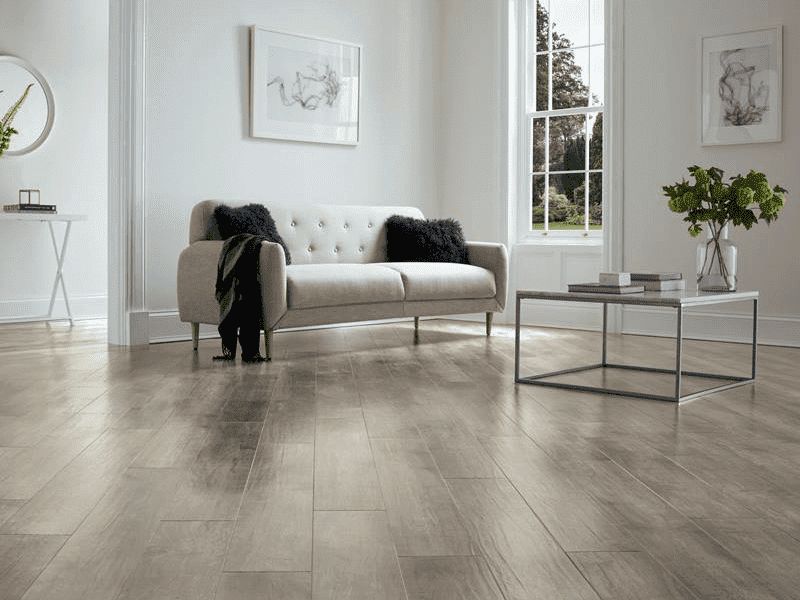
See the product : Karndean Art Select Oak Royale Storm Oak
3. Laminate Flooring
Laminate flooring offers a cost-effective and versatile option for uneven floors, with floating installation methods and easy maintenance, making it an attractive choice for addressing subfloor irregularities and ensuring long-term durability.
This type of flooring can effectively accommodate slight variations in the subfloor, providing a smooth and level surface. Its floating installation method allows for flexibility and can compensate for minor imperfections in the subfloor, making it suitable for uneven surfaces.
In terms of repair, damaged laminate planks can be easily replaced without requiring extensive subfloor repairs, reducing maintenance costs. Regular sweeping and occasional damp mopping are usually sufficient to keep laminate floors looking pristine, making them a convenient choice for homeowners.
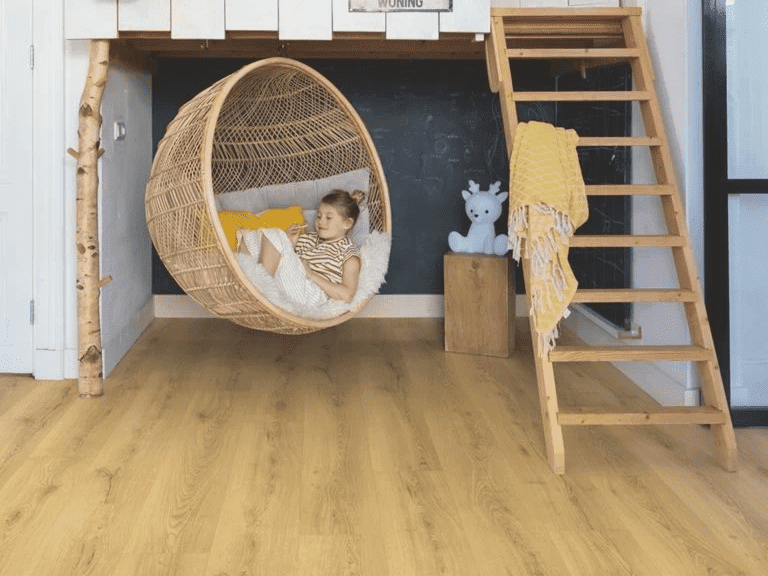
See the product : Quick-Step Classic Light Classic Oak
4. Engineered Wood Flooring
Engineered wood flooring offers the natural beauty of wood with enhanced stability, making it a viable choice for uneven floors, allowing for versatile installation methods and the ability to accommodate minor subfloor irregularities.
This flooring option’s flexibility extends to its installation on various subfloors, including concrete and existing wood floors, making it a compelling choice for renovation projects. Its layered construction also provides resistance to temperature and moisture fluctuations, reducing the risk of warping or shrinking.
Engineered wood flooring’s click-lock or glue-down installation systems facilitate straightforward floor repair and subfloor leveling, offering homeowners an efficient solution for enhancing their interior spaces.
Our Recommendation
5. Cork Flooring
Cork flooring offers a sustainable and resilient option for uneven surfaces, with natural thermal and acoustic properties, making it an eco-friendly and comfortable choice for subfloor irregularities and renovation projects.
Its unique cellular structure provides excellent insulation, making it an energy-efficient flooring choice, and its natural resistance to moisture and mold makes it ideal for rooms prone to dampness. Its elastic surface offers a forgiving feel underfoot, making it a comfortable solution for high-traffic areas. Cork flooring’s ability to be sanded and refinished allows for addressing subfloor repair methods and extending its lifespan, making it a durable and cost-effective choice for floor renovation.
6. Rubber Flooring
Rubber flooring provides a resilient and slip-resistant solution for uneven floors, with interlocking or adhesive installation methods, offering versatile solutions and impact absorption for various subfloor irregularities.
This type of flooring is known for its durability and the comfort it offers underfoot due to its flexibility. It can be easily installed over concrete, wood, or tile, making it a popular choice for both residential and commercial spaces.
The interlocking tiles are especially convenient as they can be laid directly over existing flooring, eliminating the need for extensive subfloor preparation. Adhesive installation, on the other hand, provides a seamless finish and ensures a long-lasting bond with the subfloor, enhancing the overall stability and performance of the rubber flooring.
Pros and Cons of Each Flooring Option
Each flooring option for uneven floors carries distinct advantages and potential drawbacks, requiring a comprehensive evaluation based on factors such as durability, installation complexity, maintenance requirements, and aesthetic appeal.
Hardwood flooring is often praised for its timeless elegance and natural warmth, but it can be prone to moisture damage and scratches. On the other hand, laminate flooring offers durability and easy maintenance, but it lacks the authentic look and feel of real wood.
For uneven floors, vinyl and linoleum present flexible and cost-effective choices, although they may not offer the same level of luxury as hardwood or laminate. Ultimately, the best flooring option for uneven floors depends on the specific needs and preferences of the homeowner.
How to Install Flooring on Uneven Floors
Installing flooring on uneven floors necessitates meticulous subfloor leveling, strategic adhesive application, and precise fitting techniques to accommodate irregularities and ensure a stable, long-lasting flooring surface.
It is crucial to start by assessing the unevenness of the floor and then addressing it with the appropriate leveling compound or self-leveling underlayment. After the subfloor is leveled, applying the right type of adhesive according to the flooring material is essential to ensure strong bonding.
When fitting the flooring, utilizing methods like scribing, floating, or using transition strips for varying heights can help create a smooth and visually appealing surface. Attention to these details during installation can greatly enhance the durability and aesthetics of the flooring.
Tools Do You Need for Installing Flooring on Uneven Floors
Successful installation of flooring on uneven surfaces requires specialized tools such as floor adhesive applicators, leveling tools, and subfloor repair kits to ensure a precise and secure installation process that addresses subfloor irregularities.
Floor adhesive applicators are essential for evenly and efficiently dispensing adhesives, ensuring that the flooring material adheres firmly to the subfloor. Leveling tools, such as self-leveling compounds and straight edges, play a crucial role in achieving a flat and smooth surface for the new flooring.
Subfloor repair kits containing fillers, patches, and primers are indispensable for addressing any structural defects within the subfloor, effectively preparing it for successful installation. These tools collectively contribute to a professional and durable flooring installation on uneven surfaces.
Steps for Installing Flooring on Uneven Floors
The installation of flooring on uneven floors involves comprehensive steps such as subfloor preparation, adhesive application, fitting adjustments, and post-installation measures to ensure a successful and durable flooring solution.
Before starting the installation process, it is essential to evaluate the level of unevenness across the floor surface. Begin by inspecting the subfloor and addressing any dips or peaks by using a self-leveling compound. Once the subfloor is level, apply a high-quality adhesive to ensure secure bonding between the flooring material and the subfloor. During fitting, make necessary adjustments to accommodate the unevenness, ensuring a uniform and visually appealing result. After installation, regular maintenance and prompt repairs will help in preserving the quality and longevity of the flooring.
Having successfully navigated the challenges of uneven floors, you deserve a flawless finale. At TEKA Flooring, we elevate your project beyond mere installation – we deliver meticulous craftsmanship that guarantees lasting beauty and impeccable levelness.
Our professionals, armed with state-of-the-art techniques and unwavering precision, conquer every bump and dip with artistry and care. Skip the potential pitfalls of DIY and entrust the heavy lifting to TEKA fitting services. We handle everything, from meticulous subfloor preparation to final flourishes, ensuring your investment receives the expert attention it deserves.
Don’t let uneven floors compromise the vision of your dream space. Invest in unmatched expertise and flawless results with TEKA Flooring’s professional installation services. Contact us today for having consultation with our team.







